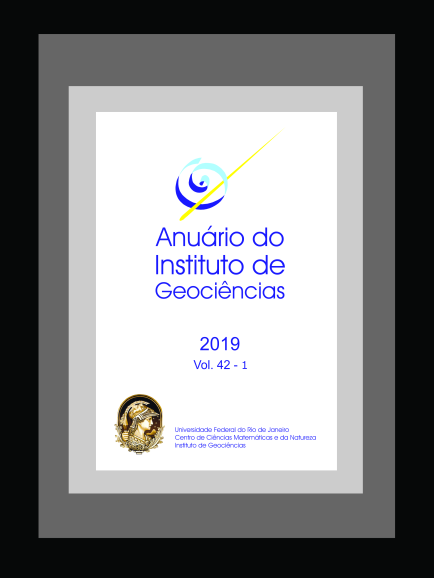Continuous Diffusion Pb Loss in Igneous Zircon: A BSE, ID-TIMS and Raman Spectroscopy Study on a Mesoproterozoic Granite from the SW Amazonian Craton
DOI:
https://doi.org/10.11137/2019_1_483_489Keywords:
Zircon, TIMS, SW Amazonian CratonAbstract
This work presents a detailed investigation on zircon crystals of a Mesoproterozoic granite from the SW Amazonian Craton using a combination of back scattered electron (BSE) imaging, thermal ionisation mass spectrometry (TIMS) and Raman scattering spectroscopy. Six zircon grains were analysed. The results plotted in the Concordia diagram yielded an upper intercept age of 1423.0 ± 3.8 Ma, which is interpreted as the crystallization age of the rock. The scattering of the analyses in such diagram indicates that U-Pb isotopes are volume-dependent in the studied zircon grains. BSE reveals zonation in the zircon crystals, and Hf is the main element causing the variability in the BSE intensity and U has a secondary effect. Both elements have much higher atomic number than the principal constituents of zircon (Zr, Si and O), so the substitution of Zr by U and Hf results in increasing image brightness. BSE images from the zircon grains exhibit a euhedral external shape and fine-scale euhedral oscillatory zoning. The predominance of magmatic zoned crystals points out that the granite has not suffered metamorphic heating or any other processes that induce the formation of new phases. The results of the Raman scattering technique indicate that a SiO4 tetrahedral internal vibrational structure is sufficiently sensitive to determine the increasing degree of metamictization. Furthermore, evidence for metamictization is given by the heterogeneity of the half-width values of the Raman scattering peaks, which exhibit a decreasing trend from the core to the rims of the analysed grains. We concluded that the combination of the three techniques provides information on the Pb loss and that the degree of U-Pb isotopic discordance correlates closely with the volume of the zircon grain. The data, in addition to the lateral degree of metamictization detected by the Raman scattering technique, indicate that the loss of radiogenic Pb may be linked to the continuous diffusion of this element. The correlation of the U-Pb discordance and metamictization emphasizes the importance of the Raman scattering spectroscopy analysis to performing zircon dating. Indeed, it is a helpful tool for geochronologists.Downloads
Download data is not yet available.
Downloads
Published
2019-12-01
How to Cite
Júnior, A. D. T. (2019) “Continuous Diffusion Pb Loss in Igneous Zircon: A BSE, ID-TIMS and Raman Spectroscopy Study on a Mesoproterozoic Granite from the SW Amazonian Craton”, Anuário do Instituto de Geociências. Rio de Janeiro, BR, 42(1), pp. 483–489. doi: 10.11137/2019_1_483_489.
Issue
Section
Article
License
This journal is licensed under a Creative Commons — Attribution 4.0 International — CC BY 4.0, which permits use, distribution and reproduction in any medium, provided the original work is properly cited.















